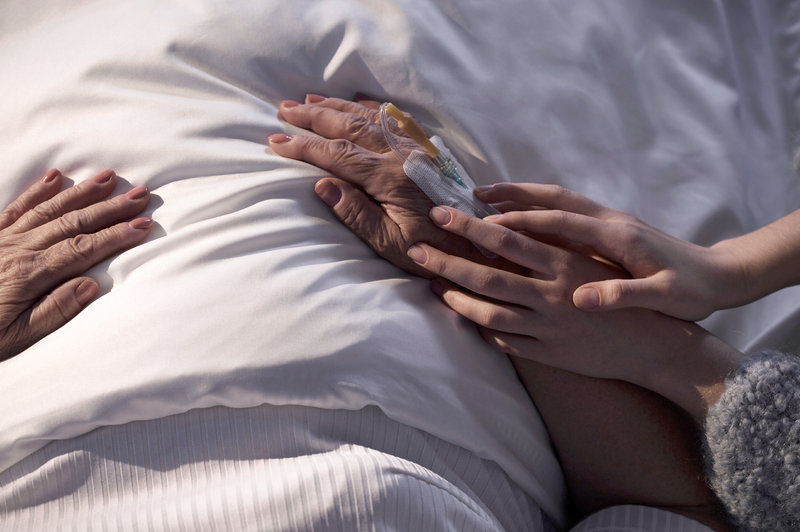By MARGOT MIFFLIN
My mother taught me many things, including, in the end, how to die.
Her death went well, I told the few friends who I knew would understand my meaning: She was not in pain, she was conscious until the day before she died, she was at home, my sister and I were with her. It was a peak experience, revelatory and meaningful — something I wouldn’t have traded for anything — except her life.
No one tells you how discreetly death can make its catch, or how languorously. It rolls in like a low wave: It’s moving, and it’s not; she’s there, afloat, and she’s not; it simultaneously sluices through her and tugs her in its tide for hours, until she’s silently dispelled by its force.

I understand, now, why death has so often been personified in art — it’s maddeningly anonymous. Sylvia Plath’s Death is two people: the one who never looks up, and the one who smiles and smokes. But her suitors are too sexy and menacing to represent the remote, impassive, mundane death I witnessed. Jacques Brel’s Death is a spinster, a princess and a witch — all impossible: the experience of death could never be so monumentally solitary with this crowd of enablers on the sidelines.
My mother hallucinated lightly in the week before she died, and her morphine visions assured me that her death — or at least what followed it — would be O.K. “I wish I were a tree,” she said one day, which seemed reasonable in light of both her love of forests and the nature of her illness, multiple myeloma, which was whittling her bones away. She wanted to be solid again. She wanted to stand up and be rooted. A few days later she said brightly, “My father’s waiting for me.” She was ready to go.
On the night she died, five or 10 minutes after she stopped breathing, I held her in my arms and she was still there. An hour later, she was not. But she hadn’t been taken. I’m certain she had left, and seeing her go gave me the courage to think that I could do this myself, without fear.
I practiced in a dream. I was running along the rooftops of Lower Manhattan when I hit a sheer drop of 20 or 30 stories, and began to fall. I knew I would die, so I gave myself a quick admonition. First: Relax. It’s a long way down, and you could have a hell of an experience before this ends if you don’t tense up and miss it. Second: Stay horizontal so you get a clean hit and don’t make a huge mess. Third: On the ground, before you die, explain that this was an accident, not a suicide. People who love you deserve to know.
I hit the ground and found myself running again — scrambling around trying to get back to a building where I’d left a newly purchased book I was desperate to retrieve. I’d died and gone to — a bookstore. Life went on.
A month after her death, my mother was still dying. When I went to her apartment to sort her mail and pack up her things, she was there — a little less each week, but still. She walked in and flopped down on the full length of the couch with one outstretched hand brushing the floor, a Kleenex in her sleeve, surveying the vast empire of magazines on her coffee table. She appeared in my dreams, allowing me to hug her for a preposterously long time, though we both knew she was dead. This is how I held on to her for a few years — when I played it right. One night in a dream, for example, I spoke to her at length by phone, but when I asked her where she was, she sounded irritable and hedged, and the dream dissolved. So I learned not to ask.
And now, four years have passed. A gap has widened between what happened before her death and what’s happened since, and she’s slipped into it. They’re all gone now: the ghost mother, reclining on the couch; the missing person, dissembling on the phone; and the absent presence lingering in the woods where her scattered ashes have settled into the underbrush, buried under seasons of snow and wildflowers. And yet it feels as if I just met this radical new mother who did the unthinkable — the renegade who journeyed deep into the wilds of a terminal illness, shape-shifted magically before my eyes, and took off. It was an artless, innocent betrayal, based on a misunderstanding: I had simply thought she would live forever.
Complete Article HERE!



































